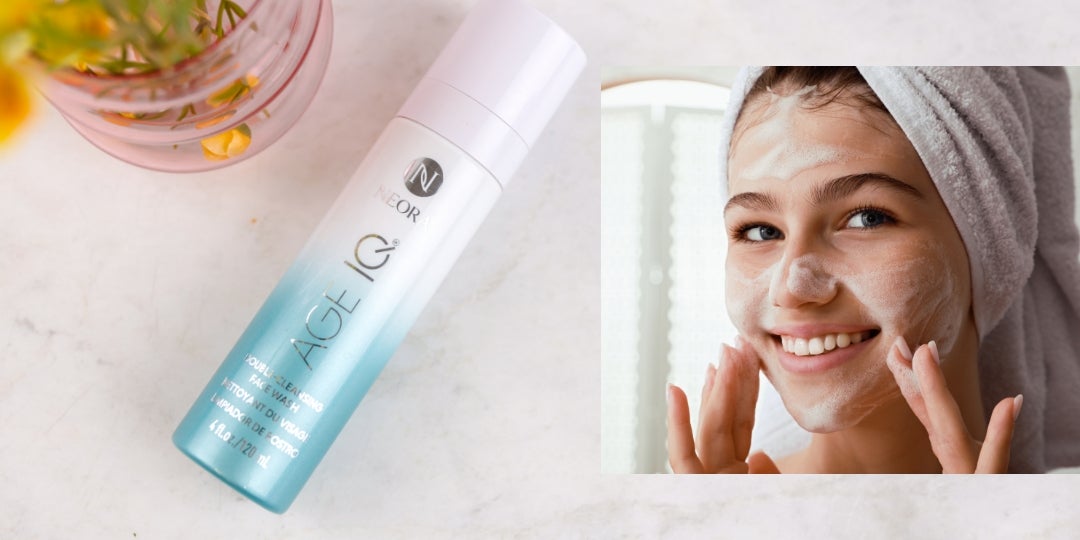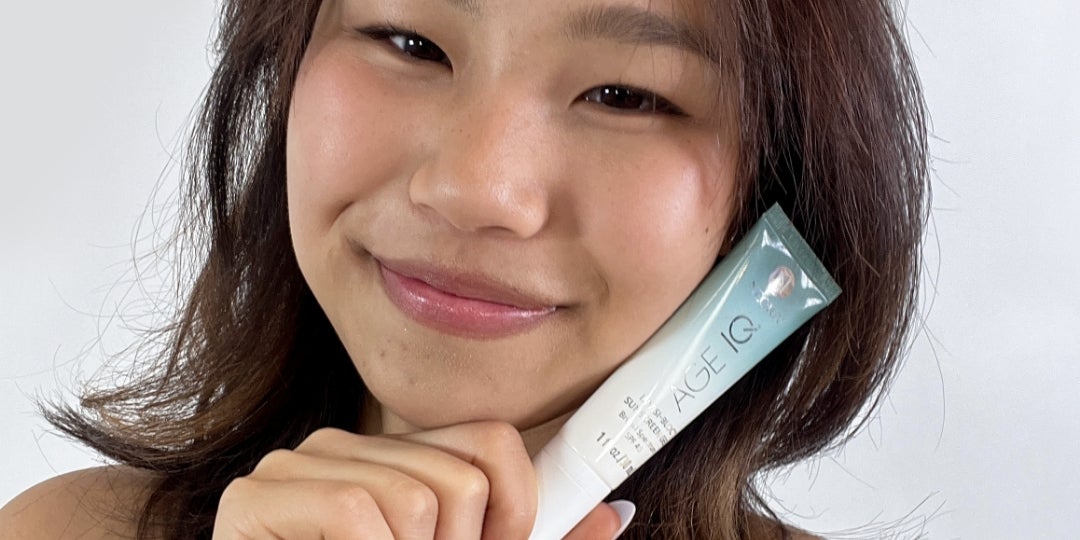How to Identify and Care for Teen Skin Types: Dry, Oily, Combination and Sensitive

As a teenager, your skin goes through significant changes, just like the rest of you. One day it might feel oily, the next dry, and sometimes it’s a confusing mix of both. That’s why understanding your skin type is so important — it is the foundation for building an effective skincare routine that is tailored to your unique needs.
Knowing your skin type is like having a roadmap to healthier, clearer skin. It helps you choose the right products while avoiding those that could irritate your skin or worsen some of your common concerns! Whether you are dealing with extra oil, dry patches, or areas that feel sensitive, identifying your skin type is the first step towards achieving the complexion you want.
In this guide, we’ll explore and break down the four main skin types that teens often experience:
- Dry Skin
- Oily Skin
- Combination Skin
- Sensitive Skin
You will learn how to recognize which category your skin falls into and discover expert care tips for each skin type. By understanding and learning which skin type you have, you can stop guessing and start using products that truly work for you. Taking the time to create a personalized skincare routine now can make a big difference in how your skin looks and feels, both today and down the road!
Let’s dive in and start your journey to understanding your unique skin type and achieving that healthy glowing skin!
How to Identify Your Skin Type

Figuring out your skin type is the first step towards building your skincare routine that works best for you. Here are three of the easiest ways to determine whether your skin is dry, oily, combination, or sensitive.
- The Bare-Face Method
This simple method lets you observe your skin’s natural state:
- Step 1: Cleanse your face with a mild, non-drying cleanser.
- Step 2: Pat your skin dry and don’t apply any additional products.
- Step 3: Wait 30-60 minutes to let your skin return to its natural state.
What to Look For:
- Dry Skin: Feels tight or flaky.
- Oily Skin: Looks shiny, especially in the T-zone (forehead, nose, and chin)
- Combination Skin: Oily in some areas (like the T-zone) and dry in others.
- Sensitive Skin: Feels itchy, burns, or turns red.
- The Blotting Paper Test
This quick test can help measure how much oil your skin produces:
- Step 1: Wash and dry your face, and wait around 30 minutes.
- Step 2: Press blotting paper on your T-zone, cheeks, and chin.
- Step 3: Hold the paper up to the light to see how much oil it has absorbed.
Results:
- Little to no oil? = Dry Skin
- A lot of oil from the T-zone? = Oily Skin
- Is oil only in the T-zone? = Combination Skin
- Redness or irritation during the test? = Sensitive Skin
- Visual and Tactile Cues
Pay attention to how your skin looks and feels.
- Dry Skin: Tight, rough, or flakey. Small, barely noticeable pores. Prone to fine lines.
- Oily Skin: Shiny, especially in the T-zone. Larger, more visible pores. Prone to blackheads and pimples.
- Combination Skin: Oily in the T-zone and dry on cheeks. Larger pores in oily areas. Tight or greasy in different spots.
- Sensitive Skin: Red, itchy, or irritated easily. Burning or stinking after product use. Reacts to weather, stress, or products.
Remember, your skin type can change over time due to factors like hormones, the food you eat, and your environment. It is always a good idea to recheck your skin type periodically, especially if you notice any changes in how your skin looks or feels.
By using these methods and observing your skin closely, you’ll be better equipped to identify your skin type and choose the right skincare products for your needs.
Dry Skin in Teens: Understanding and Caring for Your Dry Skin

If your skin feels tight, rough, or flaky, you might be dealing with dry skin. Don’t worry – it’s a common issue for many teens. Let’s dive into what causes dry skin and how you can keep it healthy and hydrated.
How to Tell if You Have Dry Skin
Dry skin isn’t just about feeling parched. Look out for signs like a tight feeling after washing, visible flaking or scaling, and skin that looks dull or feels itchy. You might also notice that fine lines appear more visible, and your skin seems prone to irritation or redness.
Why Do Teens Get Dry Skin?
Teenage years bring a lot of changes, and your skin is no exception. Hormonal shifts during puberty can affect your skin’s oil production. But that’s not all – factors like harsh weather, hot showers, strong soaps, and not drinking enough water can also leave your skin feeling dry. Sometimes, it’s even in your genes!
Caring for Dry Skin: Your Game Plan
Treating dry skin is all about gentle care and hydration. Start by switching to a mild, fragrance-free cleanser that won’t strip your skin of its natural oils. After cleansing, while your skin is still damp, apply a rich, hydrating moisturizer to lock in that moisture.
Drinking plenty of water throughout the day helps hydrate your skin from the inside out. And don’t forget to protect your skin from the elements – use sunscreen daily and shield your face from harsh winds and extreme temperatures.
Ingredients That Love Dry Skin
Look for these skin-friendly ingredients to keep your face moisturized and comfortable:
- Hyaluronic acid: Attracts water to the skin.
- Ceramides: Strengthen the skin’s natural barrier.
- Glycerin: Locks in hydration.
- Shea butter or niacinamide: Soothes and repairs dryness.
Your Daily Skincare Routine for Dry Skin
Morning:
- Cleanse: Wash your face with a gentle, creamy or hydrating cleanser to remove impurities without stripping moisture.
- Moisturize: Apply a rich, hydrating moisturizer to lock in moisture and protect your skin barrier.
- Sunscreen: Finish with a broad-spectrum SPF 30+ to shield your skin from harmful UV rays.
Evening:
- Cleanse: Use the same gentle, hydrating cleanser to clean your face.
- Treat: Apply a hydrating serum with ingredients like hyaluronic acid for extra moisture.
- Moisturize: Layer on a thicker night cream or facial oil to deeply nourish your skin overnight.
✨ Skincare Tip: Look for products with hydrating ingredients like hyaluronic acid, glycerin, ceramides, or shea butter to keep your skin soft and smooth.
Remember, consistency is key when it comes to skincare. Stick to your routine, and you should start seeing improvements in your skin’s hydration levels within a few weeks. If your dry skin persists or becomes painful, don’t hesitate to talk to a dermatologist. They can provide personalized advice and may recommend treatments specific to your needs.
By understanding your dry skin and giving it the TLC it needs, you’ll keep your skin soft, healthy, and comfortable. Stick with it – your skin will thank you!
Oily Skin in Teens: Taming the Shine
Does your face feel oily or shiny by lunchtime? You are not alone! Oily skin is incredibly common during the teen years, thanks to those pesky hormones. But don’t worry – with the right knowledge and care, you can keep that excess shine in check.
Spotting Oily Skin
Signs that you have oily skin include:
- A shiny or greasy appearance in the T-zone
- Large, visible pores
- Frequent blackheads or acne breakouts
- Makeup that smudges or slides off throughout the day
- Skin that feels thick or rough in texture
💡 Pro Tip: Even if your skin feels oily, don’t skip moisturizer! Hydration helps balance oil production.
Why Is Teen Skin Often Oily?
During puberty, hormones – especially androgens – go into overdrive. These hormones signal your oil glands to produce more sebum (your skin’s natural oil). While sebum is important for protecting and moisturizing your skin, too much can lead to clogged pores, breakouts, and a shiny look.
Other factors that make oily skin worse include:
- Genetics: If one or both of your parents have oily skin, you might too.
- Weather: Hot, humid climates can increase oil production in your skin.
- Stress: Hormonal changes that are linked to stress can make skin oilier.
- Skincare Products: Using products not suited for your skin can trigger even more oil production.
Instead of trying to strip your skin of oil, focus on balancing it. Here’s how:
- Cleanse twice a day with a gentle foaming or gel-based face wash.
- Stick to oil-free, non-comedogenic products to avoid clogged pores.
- Use a lightweight, oil-free moisturizer to keep your skin hydrated.
- Apply a clay mask once or twice a week to absorb excess oil.
- Carry blotting papers for quick touch-ups during the day.
💡 Pro Tip: Over-cleansing or harsh scrubs can trigger your skin to produce more oil. Be gentle!
Teen-Safe Ingredients to Look For
Stick to gentle, effective ingredients that are safe for teen skin:
- Salicylic Acid: Helps clear blackheads, control oil, and prevent breakouts.
- Niacinamide: Soothes the skin and helps reduce excess oil production.
- Hyaluronic acid: Provides lightweight, oil-free hydration to keep skin balanced.
- Clay (like kaolin or bentonite): Absorbs oil and keeps your skin matte.
- Tea tree oil: A natural antibacterial ingredient to fight breakouts (use diluted products to avoid irritation).
A Simple Skincare Routine for Oily Teen Skin
Morning
- Cleanser: Wash with a gentle, foaming cleanser.
- Toner (optional): Use an alcohol-free toner with niacinamide or salicylic acid.
- Moisturizer: Apply a lightweight, oil-free moisturizer.
- Sunscreen: Use a broad-spectrum, non-comedogenic SPF 30+ every day.
Evening
- Cleanser: Wash your face again with your gentle cleanser.
- Treatment: If needed, use a product with salicylic acid to prevent breakouts.
- Moisturizer: Apply your oil-free night moisturizer to keep your skin hydrated.
Managing oily skin takes patience and the right routine. Focus on gentle, teen-friendly skincare products, and remember that oil production is normal—it’s part of keeping your skin healthy. With consistency, you can rock a clear, fresh-looking complexion!
Combination Skin in Teens: Balancing Act for Your Face

Does your skin feel oily in some spots and dry in others? You’re not imagining things – that’s combination skin! It is super common for teens, but with the right care, you can keep your skin balanced and healthy.
How to Spot Combination Skin
Signs of combination skin include:
- Oily T-zone (forehead, nose, and chin) but normal-to-dry cheeks.
- Enlarged pores in oilier areas.
- Breakouts are mainly in the T-zone.
- Your skin changes with the seasons – oilier in summer, drier in winter.
Why Teens Get Combination Skin
Just like with other skin types, hormones play a big role. During puberty, your oil glands can go into overdrive, especially in the T-zone where these glands are more concentrated. But other factors can contribute too:
- Genetics: If your parents have combination skin, you might too.
- Climate changes: Hot weather increases oil, while cold weather dries skin out.
- Skincare habits: Using products that are too harsh or heavy can throw your skin off balance.
- Hormones: Puberty triggers oil production in specific areas.
Caring for Combination Skin
The key to managing combination skin is treating different areas of your face, using a balanced approach for the two skin types.
- Gentle cleansing: Use a pH-balanced cleanser to clean your face without stripping moisture.
- Lightweight moisturizer: Pick an oil-free formula that hydrates without clogging pores.
- Multi-masking: Apply a clay mask on oily areas and a hydrating mask on dry spots.
- Mattify strategically: Use mattifying products only on your T-zone to avoid drying out other areas.
- Non-comedogenic sunscreen: Always protect your skin, no matter its type.
Ingredients to Look For
Look for products that have these gentle yet effective ingredients:
- Hyaluronic acid: Adds hydration without heaviness.
- Niacinamide: Balances oil production and smooths skin texture.
- Salicylic acid (use occasionally): Clears clogged pores and reduces breakouts in oily areas.
- Jojoba oil or grapeseed oil: Lightweight, non-greasy oils to hydrate drier areas.
Your Teen-Friendly Skincare Routine for Combination Skin
Morning:
- Cleanse: Wash your face with a gentle, foaming cleanser.
- Moisturize: Use a lightweight, oil-free moisturizer.
- Mattify (optional): Apply a mattifying product on your T-zone if it’s shiny.
- Sunscreen: Finish with a non-comedogenic SPF 30+.
Evening:
- Cleanse: Remove makeup and cleanse your face gently.
- Treat: Use a spot treatment on breakouts only as needed.
- Moisturize: Apply your lightweight moisturizer, adding extra to dry areas if needed.
💡 Seasonal Tip: Your skin might need more moisture in the winter and less in the summer—adjust your products accordingly.
Combination skin might feel like a challenge, but it’s actually quite common, especially among teens. Remember, your skin’s needs may change over time, so stay tuned to how it feels and looks. Don’t be afraid to adjust your routine as needed. With some patience and the right care, you can achieve a balanced, healthy complexion that looks great in selfies and feels comfortable all day long. Embrace your unique skin – it’s part of what makes you, you!
Sensitive Skin in Teens: Treating Your Skin with Extra TLC
Does your skin seem to react to everything? Redness, itching, burning feelings? If this sounds familiar, you might have sensitive skin. Don’t worry, you’re not alone. Many teens deal with sensitive skin, and with the right approach, you can keep your skin calm and happy.
Recognizing Sensitive Skin
Sensitive skin can sometimes feel like it has a mind of its own, reacting to things that don’t bother other people’s skin. If you have sensitive skin, you might notice:
- Frequent redness or flushing
- Skin that burns or stings after using products
- Itching or tight feeling
- Reactions to weather changes
- Breakouts or rashes after trying new products
- Dry patches or flaking
Why Is My Skin So Sensitive?
Just like with other skin types, hormones can play a significant role. During puberty, your skin may become more reactive due to these hormonal changes. However, other factors can also contribute to skin sensitivity:
- Genetics: If family members have sensitive skin, you might inherit it too.
- Skin Conditions: Conditions like eczema, rosacea, or allergies can make your skin more prone to sensitivity
- Environmental Factors: Pollution, extreme weather conditions, and UV sun exposure can irritate your skin.
- Harsh Products: Using skincare products with strong chemicals, fragrances, or alcohol can trigger reactions.
- Overwashing: Washing your face too frequently or using hot water can strip your skin of its natural oils, making it more sensitive.
Caring for Sensitive Skin: Handle with Care
The key to managing sensitive skin is to be gentle and minimize irritation. Here’s how you can take extra care of your sensitive skin:
- Gentle cleansing: Use a mild, fragrance-free cleanser to clean your face without causing irritation.
- Patch testing: Always patch test new products before applying them to your face to avoid potential reactions.
- Simple routine: Keep your skincare routine simple – less is often more to prevent overloading your skin with products.
- Avoid hot water: Use lukewarm water when washing your face to avoid stripping your skin of its natural oils.
- Gentle application: Be gentle when applying products – no harsh rubbing!
- Mineral-based sunscreen: Protect your skin from the sun with a mineral-based sunscreen to avoid irritation from chemical sunscreens.
Ingredients to Look For
Look for products that have these gentle yet effective ingredients:
- Aloe Vera: Soothes and reduces inflammation, perfect for calming irritated skin.
- Chamomile: Calms and reduces redness, helping to soothe sensitive skin.
- Hyaluronic Acid: Adds hydration without causing irritation, keeping skin moisturized.
- Ceramides: Strengthen the skin barrier and lock in moisture, protecting sensitive skin.
Avoid products with these potentially irritating ingredients:
- Fragrances: Can cause irritation and allergic reactions.
- Alcohol: Can dry out and irritate sensitive skin.
- Harsh Exfoliants: Can cause micro-tears and irritation.
- Essential Oils: While natural, they can be irritating for some people.
Your Daily Sensitive Skin Routine
Morning:
- Rinse with cool or lukewarm water: You might not need a cleanser in the morning to avoid over-cleansing.
- Apply a gentle, fragrance-free moisturizer: Hydrate your skin without causing irritation.
- Finish with a mineral-based sunscreen: Protect your skin from UV rays with a formula that’s less likely to cause a reaction.
Evening:
- Cleanse with a gentle, creamy cleanser: Remove impurities without stripping your skin of its natural oils.
- Apply a soothing, fragrance-free moisturizer: Nourish and calm your skin overnight.
Sensitive skin can be challenging, but it’s also an opportunity to understand and care for your skin. With patience and the right approach, you can achieve a calm, healthy complexion. Remember, what works for someone else might not work for you, so find what suits your unique skin.
If persistent redness or irritation occurs, consult a dermatologist. They can identify underlying conditions and recommend safe treatments for sensitive skin.
Listen to your sensitive skin and treat it with the extra love it needs. With the right care, you can keep your skin calm and happy, letting your natural beauty shine through!
Embracing Your Unique Skin
Whether you’ve discovered you have dry, oily, combination, or sensitive skin, remember that each skin type has its own strengths and challenges. The key to healthy, glowing skin isn’t about having a “perfect” skin type — it’s about understanding your skin’s needs and caring for it accordingly. Be patient with your skincare journey, stay consistent with your routine, and don’t be afraid to adjust as your skin’s needs change. Remember, a simple routine with well-chosen products often works best.
No matter your skin type, always prioritize hydration and sun protection. If you’re struggling with persistent skin issues, don’t hesitate to consult a dermatologist for personalized advice. Your skin is as unique as you are, so embrace your skin type and treat it with the care it deserves. With the right approach and a positive attitude, you can achieve healthy, happy skin that lets your true beauty shine through!
No Comments